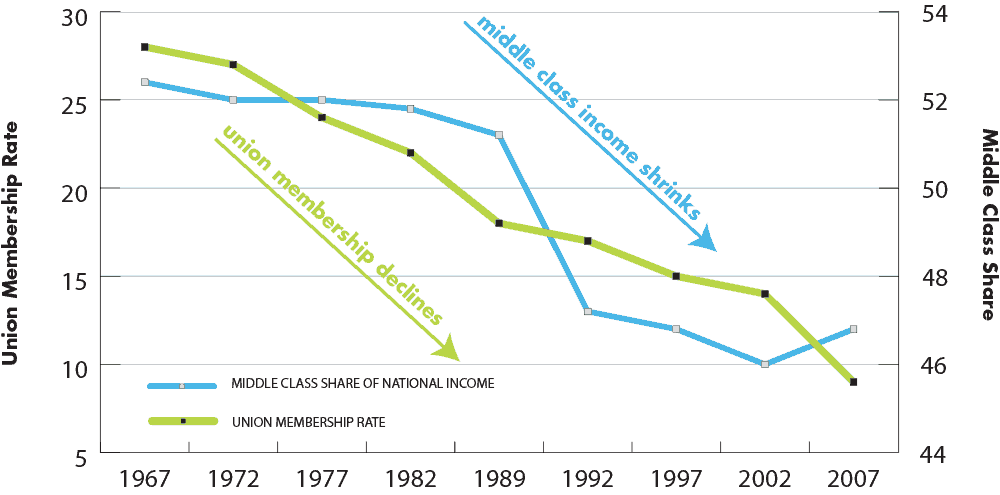Divide and conquer works. When you face a strong enemy it's always a good strategy to find ways to break them apart into smaller units that can be fought separately. A state initiative to gut California's public-employee pension and healthcare benefits is trying to do just that.
A well-funded campaign is underway (again) to take advantage of the state's constitutional amendment initiative process, this time to place a proposition called the "Voter Empowerment Act of 2016" on the 2016 ballot. The initiative would require that voters approve any pension and health benefits in contracts for new teachers, nurses, police and other government employees as well as any pension enhancements for existing employees.
This initiative follows a pattern well-known to California public-interest advocates. Ballot initiatives must receive 585,407 signatures to qualify, and corporate/billionaire-funded initiatives hire paid signature gatherers to get this done. Then they launch a well-funded, deceit-filled campaign to scare voters.
Similar anti-pension campaign have been, are and will be underway in states and municipalities across the country.
Divide And Conquer
Public-employee pension-gutting initiatives and other anti-union efforts typically use divide-and-conquer strategies to accomplish this mission. Here are a few classic divide-and-conquer techniques:
- Make people suspicious of each other.
- Make people question their leadership and mission.
- Divide attention with distraction and diversion - get the other side to "take their eye off the ball."
- Make people fight on different fronts.
- Prevent alliances and promote infighting.
- Maginalize and dehumanize groups so others look down on and ignore them.
All of these divide people from each other and weaken whatever organizational structures people have or might wish to form. That is exactly what is happening as billionaires and giant corporations work to turn the regular working public against unions and break unions up. As private employers squeeze their employees more and more by reducing pay and benefits, getting rid of pension plans, and so on, people feel they are falling further and further behind. If they can get people to believe that unions are about some separate, distant "them" instead of "we" and "us," they can turn some working people against other working people, and keep them from realizing this is why everyone's wages and living standards are under such stress.
In the case of public-employee pensions, they tell people that this "other" – public-employee union members – are getting more money than regular workers, or hogging tax resources that could go to roads and other public needs. They say "lavish" pensions are "eating up government budgets" or "causing massive borrowing."
How often do you hear that public employees are paid more than the rest of us, and have "lavish" benefits? How about the term "union bosses?"
This is part of that process of dehumanizing and dividing – get people to think there is this "other" who is their enemy and who doesn't deserve what the rest of us deserve, so people don't see what's being done to them behind the screen.
Unions Are An 'Us'
A labor union is the very definition of "us" and "we." It is employees banding together to ask for decent pay, benefits and better working conditions for themselves and others. By banding together they are stronger than if each employee went to the manager alone, by themselves, with no one backing them up to ask, please, for a raise or, please, can you stop calling me names and shouting?
Dividing working people is one of the oldest strategies in the book. First, if a high level of unemployment can be maintained people are divided by necessity. If you are hungry you are not likely to say, "no you shouldn't ask me to take his or her place, they need that job." Another way to divide is to help keep workers elsewhere poorly paid so your own employees have nowhere to go and you don't face wage competition when you hire. Or the better wages and conditions that unionized employees get can be used against them by arguing that "they are getting paid so well and you are not; you should resent them." Yet another is to divide the union leadership from the membership by claiming they are "bosses" who tell you what to do and then keep all the dues for themselves.
Don't let yourself be divided by "us vs. them" arguments. The reality is that when unions are strong, everyone benefits -- union member or not. Here are a couple of charts that illustrate the difference unions make in everyone's pay.

Not just union members benefit when unions are strong; the whole middle class benefits.

When unions are weak, most of the gains of an economy go to a few at the top, which increases inequality.
Meanwhile take a look at these websites:
UNIONS WORK: Unions create an economy that works for all of us.
Over the past few decades, union membership has declined, contributing to increased income inequality. When we take away Americans' freedom to form a union and negotiate with their employers, we are stacking the deck in favor of big corporations and the 1%. Strong unions fight against inequality and help every American get a fair shot at success.
For too many years, public service workers (and actually most Americans) have seen their job security, wages and benefits, and retirement security erode — even though for the top 1 percent things have been great. Now, when it’s our turn to make things better for our families, they’re trying to cripple our union. We’re not going to let that happen.
----
This post originally appeared at Campaign for America's Future (CAF) at their Blog for OurFuture. I am a Fellow with CAF. Sign up here for the CAF daily summary and/or for the Progress Breakfast.

















